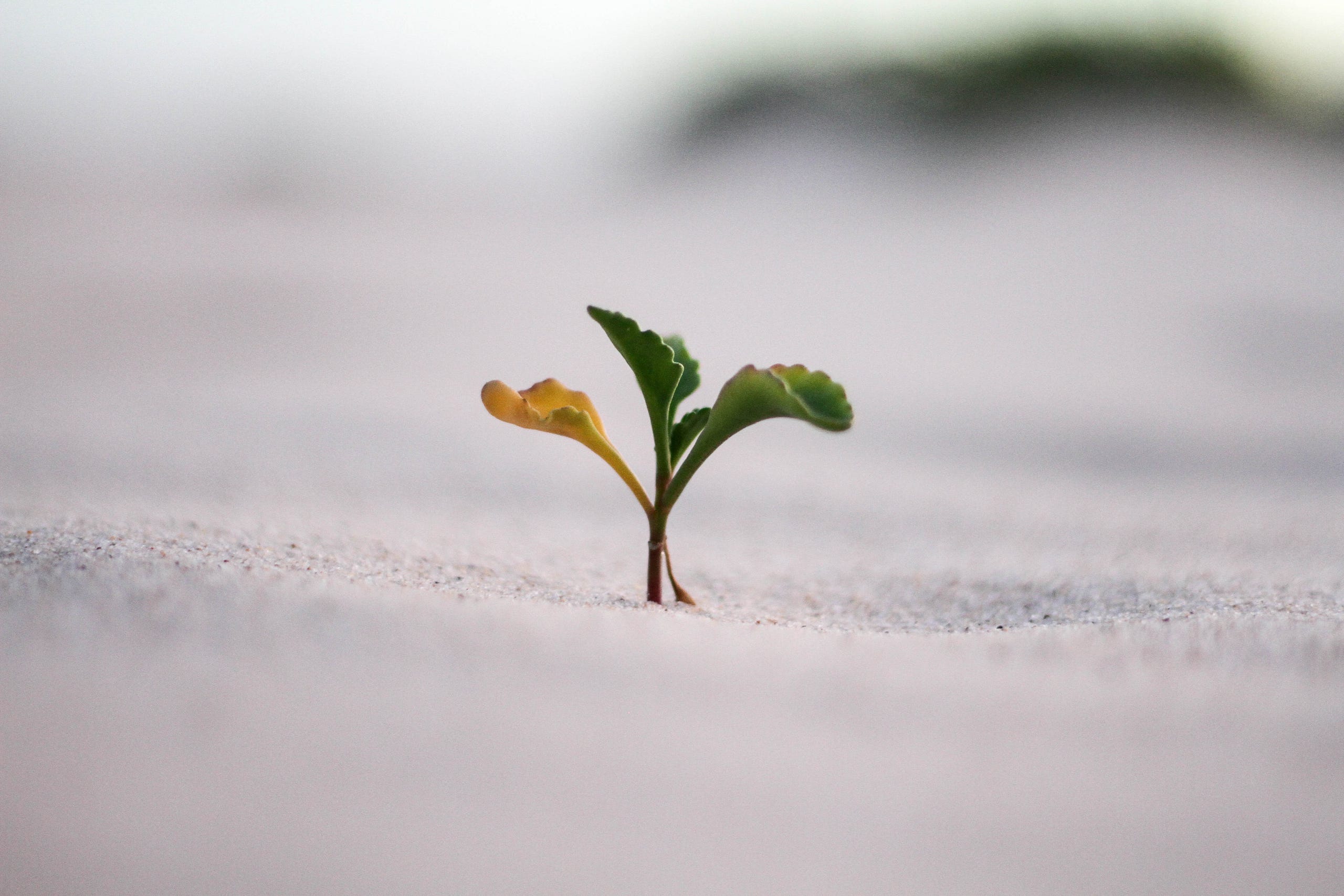Hi, I’m Jeremy, I’m glad you’re here.
No matter what you create, I’m guessing you spend a good amount of time feeling lost, hopeless, and unsure about how to get from where you are to where you want to be.
So do I. And so does everyone doing creative work.
This is the Creative Wilderness.
Every week, I publish a new article in my Creative Wayfinding newsletter about how we as creators and marketers can navigate it with more clarity and confidence.
If you’re building something that matters, but aren’t quite sure how to take the next step forward, I’d be honoured to have you join us.
Subscribe
Latest Post
Creative Tire Chocks: How to Identify & Remove the Tiny Obstacles Keeping You Majorly Stuck
If you ever find yourself parking a trailer, tire chocks are an invaluable piece of equipment.
Tire chocks are essentially wedges, often concave and plastic (though 2×4 pieces of lumber are commonly used as well) that are placed behind or in front of the wheels of a vehicle to keep it from rolling.
When placed intentionally, these simple tools perform their job remarkably well.
Unfortunately, the same principles of leverage that allow tire chocks to keep everything from jumbo jets to 450 tonne mining trucks in place, also apply to our creative projects.
Only, we don’t often realize the chock is in place.
If you’ve ever found yourself inexplicably stalled on a project that you can’t seem to make progress on, chances are, there’s an unseen chock wedged in a key location.
And until you find it and remove it, chances are, you’re not going anywhere.
Overcoming a Year-Long Chock
Until recently, I had been stuck on a tire chock with one of my projects for more than a year.
The project is a quiz audit allowing podcast creators to answer a series of questions about their current approach to marketing and then receive a personalized grading and breakdown of each of the categories of marketing.
I was excited about the idea, knew it would be incredibly valuable for my audience of podcast creators, and recognized that it was going to be a central part of the Podcast Marketing Academy marketing strategy going forward.
Despite my excitement and the clear incentives, however, I found myself inexplicably stuck.
For a year.
Finally, a couple weeks ago, I forced myself to sit down and do a simple brain-dump a list of possible questions that might eventually make up the audit.
Almost like magic, as soon as I had written down the first few questions and their possible responses, the rest of questions followed.
From there, I signed up for the quiz software I’d been eyeing since I first had the idea for the audit, uploaded up the quiz and quickly set up the scoring system.
Then, I designed the landing page, wrote out all the copy and analysis on the results page, and scripted out the follow-up email course.
Within just a few days, the project I’d been stalled on for more than a year was nearly complete.
So what happened?
The (Unfortunate) Power of Leverage
At first glance, it seems silly that a simple low-stakes task like brain-dumping a list of potential questions might be the chock that holds up an entire project.
And yet, in my experience, almost all creative project chocks are equally small and seemingly simple.
Which is exactly why we overlook them.
The truth is, if placed in juuuuuust the right location, even a tiny chock can hold back the weight of a much larger object.
In fact, relatively small 100 lb chocks are routinely used to prevent the aforementioned 450 tonne (1,000,000 lb) mining trucks from rolling down hills.
Is it so surprising, then, that seemingly insignificant tasks routinely stall our creative projects?
The good news is that despite chocks being both plentiful and incredibly effective in their ability to prevent our progress, in the end, they’re fairly easy obstacles to overcome.
At least if we know where to look for them and how to remove them.
Three Types of Creative Chocks
A chock keeping a project in place can be almost anything. But in my experience, they most commonly fall into one of three categories.
- An external circumstance that needs to fall into place
- An action or task to complete
- A decision to be made
Let’s have a closer look at each type.
An External Circumstance That Needs To Fall Into Place
These chocks show up most regularly in projects involving other people.
In these cases, the chock is often a task or decision that someone other than us needs to make for the project to move forward.
Another type of chock in this category might be that the timing isn’t quite right for our project and we need to wait for the conditions to change for our project to be viable.
This category of chocks are particularly frustrating because, while we may be able to influence the situation, we don’t have direct control to remove the chock ourselves.
Fortunately, these types of external chocks are less common than the other two categories, over which we have full and direct control.
An Action or Task to Complete
Perhaps most commonly, the chock on a creative project is one, often simple task that holds the rest of the project up until it’s been completed.
This was the case in my own quiz audit project.
And as in my case, the reason we tend to avoid and procrastinate on these tasks is often not the work involved with the task itself, but an underlying lack of clarity.
That lack of clarity might be centered on whether this is, in fact, the right task to work on, whether it will achieve the desired result, how to approach the task in the first place, or any number of other doubts, big and small, rational and irrational.
The irony is that these tasks are often exceedingly small, taking no more than 15 or 30 minutes to knock out of the way, paving the way for the rest of the project to roll downhill and build momentum.
And yet, our desire for certainty before starting them often keeps us inert for weeks, months, or even years.
When encountering this type of chock, the most productive action we can take is to simply force ourselves to take the first step forward without perfect clarity.
Because more often than not, once we take that step, we realize we already have all the clarity we need.
A Decision to be Made
The final category of creative chock is a decision that must be made in order for a project to move forward.
This might be a decision about which software to use for a project, how to allocate tasks among your team, mapping out a schedule, or determining the priority of a given project in relation to other initiatives.
These chocks are perhaps the most insidious, because we’re often not aware of them.
These decisions can be large and important, but as with most chocks, are more often small and inconsequential, though often magnified in scope and significance in our minds.
To remove these chocks, I personally like to convert them into a task, getting them out of the vague recesses of my brain and into my task manager where I can schedule them to be addressed.
In most cases, when made plain and approached directly, a decision I’ve spent weeks mulling over can be made in a matter of minutes or even seconds.
Removing Creative Chocks & Building Momentum
For all the problems chocks make for us, they present an incredible opportunity.
Because once we train ourselves to spot and remove them, we quickly realize that most of the challenges keeping us from progress are not giant, immovable boulders blocking our path, but tiny pebbles to be nudged aside.
Once out of the way, we then build momentum, making it harder for future chocks to slow or stall us.
The first step when we’re stuck, then, is to identify the type and location of the chock.
Personally, I’ve created a field in my Notion project management system specifically to write down the current chock that’s holding each project up.
Because, if a project isn’t moving forward, it’s almost certainly because of a chock.
Clearly identifying the chock as specifically as possible reduces my frustration around projects I feel stuck on and gives me a clear map to getting them moving.
Once the chock has been identified and removed, the next step is to focus on building momentum.
Chocks are most easily placed when we’re standing still, such as at the start of a project or between distinct phases such as moving from building a product to marketing it.
But they also have a way of lodging themselves in front of the wheels of projects that aren’t getting our full time or attention.
To avoid this, it’s helpful to choose your timing to remove your current chock wisely, ensuring you have the bandwidth to continue rolling with the project once the impediment has been removed.
If you don’t, there’s a good chance the next task in line will quickly solidify into a new chock, stalling any potential to build momentum.
Of course, no matter how much momentum we build, various chocks will always find a way to stall and disrupt our work.
They call to mind Archimedes’ famous quote about leverage, which in this case, might be slightly rephrased as:
“Give me a wedge and a gap to place it, and I shall hold back the world.”
Learn, to spot and remove them, however, and the world is yours for the taking.
Explore how to navigate a creative life that matters
This article originally appeared in my weekly Creative Wayfinding Newsletter. Each issue is the product of a week of work, and contains something not available for sale.
A fresh perspective, a shot of encouragement when you need it most, and maybe even some genuine wisdom from time to time.
Each week, we explore a different facet of the question “How do we navigate the wilds of creating work that matters?”
It’s something I’m proud to create and I’d be honoured to share it with you.
Subscribe
More Posts
Marketing Is About More Than Visibility

To many new small business owners, podcasters, bloggers, and creatives of all stripes, marketing appears to be about nothing more than visibility.
You might see a flashy ad campaign from a big brand that catches the eye but doesn’t really say anything, and make the assumption that catching your audience’s eye is all it takes to start raking in the sales.
Big, household-name brands, however, are engaged in a very different type of marketing than the one you should be pursuing as a creator with a decidedly non-household name.
Yes, visibility is essential, people need to be aware you exist before they’re likely to follow you, engage with you, and ultimately buy from you. But visibility without saying something that resonates with your target audience won’t help you grow that audience much at all.
Beyond visibility, one of the most essential elements of effective marketing is displaying alignment on personal values.
We all want to support companies and creators who are like us, who believe the same things we do, who are working toward a common goal.
Too often, small businesses and creators feel that their personal beliefs and broader goals of their work are irrelevant, that the work should speak for itself. They may even think that by bringing their personal beliefs and values into their work they’re potentially turning away potential members of their audience.
And they’re right, they probably are.
But they’re also laying the groundwork for a relationship with the people who do resonate with their values that goes beyond transactional.
If you want to create raving fans, you’re going to have a tough time doing in based on the quality of your product alone. You need to inject emotion, values, and a bigger purpose to your work that your audience shares a belief in.
To start building that tribe of believers, you need to be intentional about sharing your values and mission publicly.
Put them on your website, talk about them on your podcast, create social media posts that ignore your content and products entirely, and simply talk about the change you want to make in the world, your vision for what better looks like.
You need to define what the in-group looks like for your audience so they can self-select.
The ones who don’t believe what you do? Meh, it wasn’t for them.
But the ones that do? You’ve just become their one and only.
Every Sunday I publish an exclusive article on my newsletter that hopefully provides a new perspective, encouragement, and maybe even some occasional wisdom.
It’s something I’m proud to create and I’d be honoured to deliver it to you. If you’d like me to share it with you please subscribe here.
Want to hear more about building an audience around work that matters? I think you might enjoy these reads.
https://medium.com/@jeremyenns/keep-your-promises-41ec6c1730b3https://medium.com/@jeremyenns/keep-your-promises-41ec6c1730b3
Effective Marketing Requires Commitment and Faith

Faith might not immediately come to mind as an essential element of creating work that matters and building an audience around it.
Creativity, in-depth analysis of your market, effort, and perseverance might come more readily to mind.
But paired with commitment, a strong faith in both your process and your mission is required for building anything meaningful.
Faith in your process because few ideas, strategies, or tactics take off immediately. There’s a lag between you doing the work and the results starting to show up, and you need to be able to stick it out through that lag in feedback.
When we work with new podcasters we’ll often tell them that they should be prepared to work for a year on their show before things start to click and the results start pouring in.
Getting through that year requires faith that the process is going to work if you give it enough time.
Faith in your mission will help you get through that phase when you want to doubt the process. If you believe that your ultimate mission is worth investing in, you’ll have an easier time taking the long view, investing in the present to see returns in the future.
Faith, however, is nothing without commitment.
No matter how great your faith in your process and your mission, you need to show up every day and carry out that process.
It’s one thing to know that your podcast will take a year to gain traction and another to ensure you stick with your scheduled and put an episode out every single week, even when life throws you curveballs, you have a dozen other immediate fires to put out, and there are new shiny objects you could embrace, each promising a faster return on your investment.
Many of the marketing strategies you come across could work for you. More important than sampling a dozen different tactics before giving up when they don’t offer immediate results, is finding something that you resonate with, commit to the process, and have faith that your effort and commitment will pay off if you give it enough time.
Every Sunday I publish an exclusive article on my newsletter that hopefully provides a new perspective, encouragement, and maybe even some occasional wisdom.
It’s something I’m proud to create and I’d be honoured to deliver it to you. If you’d like me to share it with you please subscribe here.
Want to hear more about building an audience around work that matters? I think you might enjoy these reads.
https://medium.com/datadriveninvestor/marketing-hacks-wont-work-be860c8e7463https://medium.com/datadriveninvestor/marketing-hacks-wont-work-be860c8e7463
Creativity Fills a Vacuum

You’ve probably experienced the feeling of having so much on your plate that you have no time left to work on the things that really matter to you.
Maybe it’s a new product, maybe it’s launching that podcast you’ve been putting off, maybe it’s creating art, or any a thousand other creative pursuits.
Obligations, many of them mundane, habitual, or reactive have a way of crowding out the work we should be focussing on if we want to create something that matters — both to us and our audience.
Even if we are able to carve out a couple of hours in our week for our creative work, we often find ourselves tapped out of ideas, uninspired, and leave more frustrated than when we sat down to create.
If we’re serious about creating this type of work and building a tribe around it, we need to be intentional not just in creating time to do the work itself — that’s the easy part — but in creating space for ideas to form.
Creativity responds to a vacuum. It requires space for the various ideas in our head to bounce around and then connect in new and interesting combinations.
If we want to create work that’s new and meaningful, we need to get serious about consistently creating space, avoiding stimuli, and seeking out boredom.
If we create the void, the ideas will soon rush to fill it.
Every Sunday I publish an exclusive article on my newsletter that hopefully provides a new perspective, encouragement, and maybe even some occasional wisdom.
It’s something I’m proud to create and I’d be honoured to deliver it to you. If you’d like me to share it with you please subscribe here.
Want to hear more about building an audience around work that matters? I think you might enjoy these reads.
https://medium.com/@jeremyenns/consistency-is-key-b04481632829https://medium.com/@jeremyenns/consistency-is-key-b04481632829
Emptying Your Cup Is as Essential as Filling It

We’re constantly advised by well-meaning coaches, guides and gurus that we need to make sure we’re regularly filling our cup.
Life has a way of draining us of our energy, creativity, even our humanity if we let it. Without intentionally replenishing what’s been sapped from us, we risk drying out completely, crumbling, and blowing away in the wind.
In our effort to continually be filling our cup, however, we risk overfilling it with more energy and stimulus than we have the ability to deal with.
We can easily take on too much, overloading ourselves with practices, things and experiences — even good ones — to the detriment of our overall lives.
Yes, we need to be intentionally filling our cup. We need to be replenishing our energy, finding new sources of creative inspiration, and unplugging to recharge.
But maybe we also need to be intentional about how we empty our cup.
Maybe instead of letting the energy, motivation, and inspiration drain out of cracks and holes in our cups, we should be funneling the fuel that drives our creative lives toward work and projects that matter.
Our creative juices are meant to flow, following the pull of gravity, rather than sit and stagnate, leaking out slowly from neglect rather than intention
It’s not a bad thing to find ourselves empty, depleted and drained from time to time. Doing so allows us to find our limits and explore the edges of what we’re currently capable of.
Sometimes draining ourselves is the only way we can truly flush out our system so we can start fresh and pour in only the type of fuel we want to be running on.
But let’s choose to drain ourselves while pouring our heart and soul into the work that only we can do.
The energy’s going to be spent one way or another, use it wisely.
Every week I send out an exclusive article to my newsletter. No opt-in, no checklist no bribe. But hopefully a new perspective, encouragement, and maybe even some occasional wisdom.
It’s something I’m proud to create and I’d be honoured to deliver it to you. If you’d like me to share it with you please subscribe here.
Want to hear more about building an audience around work that matters? I think you might enjoy these reads.
https://medium.com/@jeremyenns/resistance-your-friend-5c10310f464fhttps://medium.com/@jeremyenns/resistance-your-friend-5c10310f464f
Less Bad, More Good

When your life isn’t where you want it to be, it’s easy to lose faith that things will ever be better and resign yourself to your lot in life.
Maybe it’s a job you hate, an unfulfilling relationship, persistent health problems, responsibilities you’re tied down to, or some other situation that for you is less than ideal.
We all have something we wish was different about our lives, some people have many somethings.
Too often we want to swap out every negative aspect of our lives for its opposite, positive version all at once, completely transforming our lives from depressing, painful, or just plain mundane to exciting and fulfilling overnight.
But it doesn’t happen that way.
Instead, we can set our sights lower and focus on the small tasks, practices, and habits in our day to day lives over which we have the power to change.
One by one, we can look at each of the tiny components of our lives, and ask how we can subtract a little bit of bad, or add a little bit more good to that element.
By addressing the building blocks of our lives and shifting the balance ever so slightly to a more positive version of itself, we can start to slowly build momentum and improve every area of our life.
It’s possible your dream life is achievable, or it might not be, depending on your dream and your circumstances. But you always have the power to make things just the littlest bit better. And better is always worth shooting for.
Every week I send out an exclusive article to my newsletter. No opt-in, no checklist no bribe. But hopefully a new perspective, encouragement, and maybe even some occasional wisdom.
It’s something I’m proud to create and I’d be honoured to deliver it to you. If you’d like me to share it with you please subscribe here.
Want to hear more about building an audience around work that matters? I think you might enjoy these reads.
https://medium.com/@jeremyenns/hunting-blind-spots-2ccbd619887ahttps://medium.com/@jeremyenns/hunting-blind-spots-2ccbd619887a
Team Feedback Is Just as Important as Customer Feedback

Regardless of how often you actually ask for it, as a business owner, you know we should be collecting regular feedback from our clients and customers to help improve the quality of your products and services, iron out kinks in your processes, and deliver a better experience in the future.
The same is true for your team.
No matter if you have a small team of in-house employees or a large number of remote contractors who don’t know of or interact with each other, it’s essential that you regularly collect feedback from them on how you’re performing both individually as their boss, and collectively as a company.
It’s easy as the leader of your companies to think operations as smoother than they really are to the people in the trenches carrying out the various tasks.
And what about your leadership and organizational skills?
If you’re like many business owners, you saw success early because of your strategy, insight and work ethic, and were forced to bring on other people as new clients kept coming in.
Many new bosses don’t realize that the skills that really matter for running a business are more than strategic thinking and the ability to execute.
Great bosses have the ability to communicate the goals, strategies, and processes to their teams, motivate them to be as committed to achieving the end result as you are, and empathize with where each person on your team is at and know what they need to be and become their best selves through their work.
You might think you have all these skills already mastered. Most entrepreneurs accustomed to success do.
But polling your team regularly and intentionally seeking out areas in which you can improve will highlight any glaring gaps in your skillset.
I got feedback early on from my team that I didn’t share praise or criticism often enough and my team members often had no clue if their work was meeting expectations. Since getting that feedback I’ve made a concerted effort to share praise, gratitude and constructive feedback more freely.
It’s easy to push digging into and improving our team culture onto the back burner. It doesn’t feel like time spent in that arena is as valuable as time spent working on getting new clients, honing our marketing, or actually doing the work.
But in the long term, a smoothly functioning team gets more done faster and at a higher quality level than one where you’re personally having to go back and make revisions, put out fires, and calm down upset customers.
Also, it’s just less stressful, and that in itself is worth the effort.
What have you learned from your team about skills you need to improve? Lemme know in the comments!
Every Sunday, I send out a newsletter on building an audience around work that matters. It’s something I’m proud of and if you’d like me to share it with you please subscribe here.
Want to hear more about building an audience around work that matters? I think you might enjoy these reads.
https://medium.com/@jeremyenns/the-long-view-be7caefb98a7https://medium.com/@jeremyenns/the-long-view-be7caefb98a7
Resistance Is Your Friend

Most people think about Resistance as the bane of every creator’s existence. It keeps you from finishing, from doing your best work, from creating something that could truly change people.
But that’s only if you give in to it.
You can also choose to view Resistance as a sign that you’re on the right track. The presence of Resistance means that you’re risking something with the work you’re doing, which is an essential element of work worth talking about.
Remember that you’re not the only one who feels Resistance exert its force on you when you sit down to create. You’re competitors almost certainly do as well.
This means that if you can embrace Resistance and find a way to thrive through the Resistance, you can pull away and set yourself away from the crowd.
I heard a story once of a Tour de France cyclist who’s philosophy centered around digging deeper, pushing harder and being better than everyone else when it came to the most difficult circumstances.
He said that you don’t win the Tour de France by being the best flat road and perfect weather rider. In those conditions, and at that level of competition, there’s almost nothing separating any of the riders from the pack.
Rather, you win by being the best at climbing steep, miles long hills at the end of a long day riding in the cold, pouring rain, when your entire body and mind want to give up.
Because everyone else is feeling the exact same way you are.
Finding the motivation to push through and be better in the most difficult circumstances is where the exceptional separate themselves and claim the rewards of doing so.
By adopting this mindset when it comes to Resistance, you can train yourself to look forward to the point at which it shows up. Because when it does, it means the real work has begun, that you’re on to something and that your opportunity to separate yourself from the competition has arrived.
Every Sunday, I send out a newsletter on building an audience around work that matters. It’s something I’m proud of and if you’d like me to share it with you please subscribe here.
Want to hear more about building an audience around work that matters? I think you might enjoy these reads.
https://medium.com/@jeremyenns/first-ten-fans-77387c2bdafhttps://medium.com/@jeremyenns/first-ten-fans-77387c2bdaf
Developing the Emotional Stamina to Create

Of all the many skills and traits that are worth developing as someone looking to make a difference through the work you create, emotional stamina might be the most important.
Despite what the American Dream would have you believe, pursuing a life of creating something new — even if that something new makes like better for everyone who engages with it — runs counter to many of the systems that guide our culture.
Because of this, you’ll face countless roadblocks, challenges, questions, doubt and likely even ridicule, sometimes from the people you care about most.
These reactions don’t inherently mean you’re wrong, or that your work is flawed, but if you believe in the work you do and you plan on persisting with it, you’re going to need the emotional stamina to weather the storm.
You can prepare yourself by recognizing from the outset that you’re going to face setbacks, doubters and non-believers and steeling yourself against them.
But the only way to build your emotional stamina is by facing down criticism and failure, picking yourself up, and carrying onward.
This is part of the process of creating.
Understand that anyone who ever created something great achieved it not just because of their innate talent, masterful skill, or perfect timing, but because they possessed the emotional stamina to persist through the resistance, doubt, and failures to eventually land on something that stuck.
Every Sunday, I send out a newsletter on building an audience around work that matters. It’s something I’m proud of and if you’d like me to share it with you please subscribe here.
Want to hear more about building an audience around work that matters? I think you might enjoy these reads.
https://medium.com/@jeremyenns/sometimes-your-work-sucks-dd301515f62fhttps://medium.com/@jeremyenns/sometimes-your-work-sucks-dd301515f62f
Curate Your Environment

You don’t have to look far to find more than enough negativity, bad news, pain, suffering, ignorance, and callousness to make you want to crawl into a hole, cut yourself off from the rest of humanity, and give up on trying.
The world can be a horrible place.
You also don’t have to look far, however, to find enough joy, connection, genuine care, empathy and inspiration to fuel your creative fires, give you hope for the future of humanity and motivate you to do your part in creating a better world for everyone.
The world can be a wonderful place.
Blame the media’s negativity bias, blame your social media feeds, blame the culture you live in, blame the people you spend time with.
In the end, these are all elements of our environment that we have the power to curate.
Turn off, unfollow, unfriend online and IRL, opt-out.
Follow what brings you joy, tune into inspiration, pursue connection and create the culture you want to live in.
Seek out the world you want to live in, and create it where it doesn’t yet exist. Take what serves you and leave the rest.
The type of world you live in is your choice to make.
Every Sunday, I send out a newsletter on building an audience around work that matters. It’s something I’m proud of and if you’d like me to share it with you please subscribe here.
Want to hear more about building an audience around work that matters? I think you might enjoy these reads.
https://medium.com/@jeremyenns/what-can-you-control-c47e4ee5143fhttps://medium.com/@jeremyenns/what-can-you-control-c47e4ee5143f
Amateurs vs Professionals

Amateurs wing it, professionals prepare.
Amateurs think of themselves, professionals think of their audience.
Amateurs wait for their audience to find them, professionals find their audience and work to get in front of them.
Amateurs believe content alone is king, professionals understand that the packaging matters.
Amateurs stick with what’s working, professionals experiment with what will work better.
Amateurs seek to be good enough, professionals seek to raise the bar for everyone.
If you’re ready to build your audience and become the go-to authority in your space using podcasting, reach out to our team at Counterweight Creative and see how we can help.
Want to hear more about building an audience around work that matters? I think you might enjoy these reads!
https://medium.com/@jeremyenns/literal-leadership-e926b573cac2https://medium.com/@jeremyenns/literal-leadership-e926b573cac2
Creative Wayfinding For Ambitious Optimists.
Creative Systems

To many creators, the idea of systems being helpful, let alone essential to creativity is anathema.
There’s a deeply ingrained belief in many of us that the purest form of creativity — the kind the produces the most transcendent work with the most depth — can only come from sudden, sporadic bursts of inspiration.
Systems evoke images of factories and assembly lines, decidedly uncreative work, and as a result, we find ourselves rejecting the basic concept of systems on principal.
But there are many types of systems, some of which can greatly lubricate the creative process and allow us to get to the crux of what we’re trying to say with our work faster.
These systems can be set up within our creative process itself or to simplify the rest of our lives and make more space for our creativity to thrive.
When I used to write and record music, I had a highly systematized folder structure on my computer. I had a system for storing my instruments and recording equipment so that within two minutes of having an idea, I could be recording it and working on it.
These were all organizational systems that enabled me to bypass what had previously been a tedious setup process that often resulted in the idea dying while I was busy finding and plugging in microphones, cables, hard drives, and so on.
These days, when it comes to writing my daily blog posts, I have a similar system of digital organization, wherein I can sit down at my computer first thing in the morning and have everything I need to get started writing ready to go, laid out the night before.
Systems can be routines, practices, organizational structures, or automation that minimizes the tedium that can often accompany certain parts of the creative process.
I have automation set up to continually publish and promote my favourite articles, for example, something that I know I won’t set aside the time to do on my own.
There are always going to be the parts of the creative process that we thrive on, and those that we put off due to lack of time, expertise, or interest.
When it comes to building systems that enable your creativity, it’s not about creating assembly lines to duplicate your past work.
Rather, it’s about creating systems to minimize your time spent in the aspects you don’t enjoy, and freeing up more time, space, and energy to do the work only you can do.
Every Sunday I publish an exclusive article on my newsletter that hopefully provides a new perspective, encouragement, and maybe even some occasional wisdom.
It’s something I’m proud to create and I’d be honoured to deliver it to you. If you’d like me to share it with you please subscribe here.
Want to hear more about building an audience around work that matters? I think you might enjoy these reads.
https://medium.com/@jeremyenns/creativity-fills-vacuum-4ce3ce4b1549https://medium.com/@jeremyenns/creativity-fills-vacuum-4ce3ce4b1549
Marketing Is About More Than Visibility

To many new small business owners, podcasters, bloggers, and creatives of all stripes, marketing appears to be about nothing more than visibility.
You might see a flashy ad campaign from a big brand that catches the eye but doesn’t really say anything, and make the assumption that catching your audience’s eye is all it takes to start raking in the sales.
Big, household-name brands, however, are engaged in a very different type of marketing than the one you should be pursuing as a creator with a decidedly non-household name.
Yes, visibility is essential, people need to be aware you exist before they’re likely to follow you, engage with you, and ultimately buy from you. But visibility without saying something that resonates with your target audience won’t help you grow that audience much at all.
Beyond visibility, one of the most essential elements of effective marketing is displaying alignment on personal values.
We all want to support companies and creators who are like us, who believe the same things we do, who are working toward a common goal.
Too often, small businesses and creators feel that their personal beliefs and broader goals of their work are irrelevant, that the work should speak for itself. They may even think that by bringing their personal beliefs and values into their work they’re potentially turning away potential members of their audience.
And they’re right, they probably are.
But they’re also laying the groundwork for a relationship with the people who do resonate with their values that goes beyond transactional.
If you want to create raving fans, you’re going to have a tough time doing in based on the quality of your product alone. You need to inject emotion, values, and a bigger purpose to your work that your audience shares a belief in.
To start building that tribe of believers, you need to be intentional about sharing your values and mission publicly.
Put them on your website, talk about them on your podcast, create social media posts that ignore your content and products entirely, and simply talk about the change you want to make in the world, your vision for what better looks like.
You need to define what the in-group looks like for your audience so they can self-select.
The ones who don’t believe what you do? Meh, it wasn’t for them.
But the ones that do? You’ve just become their one and only.
Every Sunday I publish an exclusive article on my newsletter that hopefully provides a new perspective, encouragement, and maybe even some occasional wisdom.
It’s something I’m proud to create and I’d be honoured to deliver it to you. If you’d like me to share it with you please subscribe here.
Want to hear more about building an audience around work that matters? I think you might enjoy these reads.
https://medium.com/@jeremyenns/keep-your-promises-41ec6c1730b3https://medium.com/@jeremyenns/keep-your-promises-41ec6c1730b3
Effective Marketing Requires Commitment and Faith

Faith might not immediately come to mind as an essential element of creating work that matters and building an audience around it.
Creativity, in-depth analysis of your market, effort, and perseverance might come more readily to mind.
But paired with commitment, a strong faith in both your process and your mission is required for building anything meaningful.
Faith in your process because few ideas, strategies, or tactics take off immediately. There’s a lag between you doing the work and the results starting to show up, and you need to be able to stick it out through that lag in feedback.
When we work with new podcasters we’ll often tell them that they should be prepared to work for a year on their show before things start to click and the results start pouring in.
Getting through that year requires faith that the process is going to work if you give it enough time.
Faith in your mission will help you get through that phase when you want to doubt the process. If you believe that your ultimate mission is worth investing in, you’ll have an easier time taking the long view, investing in the present to see returns in the future.
Faith, however, is nothing without commitment.
No matter how great your faith in your process and your mission, you need to show up every day and carry out that process.
It’s one thing to know that your podcast will take a year to gain traction and another to ensure you stick with your scheduled and put an episode out every single week, even when life throws you curveballs, you have a dozen other immediate fires to put out, and there are new shiny objects you could embrace, each promising a faster return on your investment.
Many of the marketing strategies you come across could work for you. More important than sampling a dozen different tactics before giving up when they don’t offer immediate results, is finding something that you resonate with, commit to the process, and have faith that your effort and commitment will pay off if you give it enough time.
Every Sunday I publish an exclusive article on my newsletter that hopefully provides a new perspective, encouragement, and maybe even some occasional wisdom.
It’s something I’m proud to create and I’d be honoured to deliver it to you. If you’d like me to share it with you please subscribe here.
Want to hear more about building an audience around work that matters? I think you might enjoy these reads.
https://medium.com/datadriveninvestor/marketing-hacks-wont-work-be860c8e7463https://medium.com/datadriveninvestor/marketing-hacks-wont-work-be860c8e7463
Creativity Fills a Vacuum

You’ve probably experienced the feeling of having so much on your plate that you have no time left to work on the things that really matter to you.
Maybe it’s a new product, maybe it’s launching that podcast you’ve been putting off, maybe it’s creating art, or any a thousand other creative pursuits.
Obligations, many of them mundane, habitual, or reactive have a way of crowding out the work we should be focussing on if we want to create something that matters — both to us and our audience.
Even if we are able to carve out a couple of hours in our week for our creative work, we often find ourselves tapped out of ideas, uninspired, and leave more frustrated than when we sat down to create.
If we’re serious about creating this type of work and building a tribe around it, we need to be intentional not just in creating time to do the work itself — that’s the easy part — but in creating space for ideas to form.
Creativity responds to a vacuum. It requires space for the various ideas in our head to bounce around and then connect in new and interesting combinations.
If we want to create work that’s new and meaningful, we need to get serious about consistently creating space, avoiding stimuli, and seeking out boredom.
If we create the void, the ideas will soon rush to fill it.
Every Sunday I publish an exclusive article on my newsletter that hopefully provides a new perspective, encouragement, and maybe even some occasional wisdom.
It’s something I’m proud to create and I’d be honoured to deliver it to you. If you’d like me to share it with you please subscribe here.
Want to hear more about building an audience around work that matters? I think you might enjoy these reads.
https://medium.com/@jeremyenns/consistency-is-key-b04481632829https://medium.com/@jeremyenns/consistency-is-key-b04481632829
Emptying Your Cup Is as Essential as Filling It

We’re constantly advised by well-meaning coaches, guides and gurus that we need to make sure we’re regularly filling our cup.
Life has a way of draining us of our energy, creativity, even our humanity if we let it. Without intentionally replenishing what’s been sapped from us, we risk drying out completely, crumbling, and blowing away in the wind.
In our effort to continually be filling our cup, however, we risk overfilling it with more energy and stimulus than we have the ability to deal with.
We can easily take on too much, overloading ourselves with practices, things and experiences — even good ones — to the detriment of our overall lives.
Yes, we need to be intentionally filling our cup. We need to be replenishing our energy, finding new sources of creative inspiration, and unplugging to recharge.
But maybe we also need to be intentional about how we empty our cup.
Maybe instead of letting the energy, motivation, and inspiration drain out of cracks and holes in our cups, we should be funneling the fuel that drives our creative lives toward work and projects that matter.
Our creative juices are meant to flow, following the pull of gravity, rather than sit and stagnate, leaking out slowly from neglect rather than intention
It’s not a bad thing to find ourselves empty, depleted and drained from time to time. Doing so allows us to find our limits and explore the edges of what we’re currently capable of.
Sometimes draining ourselves is the only way we can truly flush out our system so we can start fresh and pour in only the type of fuel we want to be running on.
But let’s choose to drain ourselves while pouring our heart and soul into the work that only we can do.
The energy’s going to be spent one way or another, use it wisely.
Every week I send out an exclusive article to my newsletter. No opt-in, no checklist no bribe. But hopefully a new perspective, encouragement, and maybe even some occasional wisdom.
It’s something I’m proud to create and I’d be honoured to deliver it to you. If you’d like me to share it with you please subscribe here.
Want to hear more about building an audience around work that matters? I think you might enjoy these reads.
https://medium.com/@jeremyenns/resistance-your-friend-5c10310f464fhttps://medium.com/@jeremyenns/resistance-your-friend-5c10310f464f
Less Bad, More Good

When your life isn’t where you want it to be, it’s easy to lose faith that things will ever be better and resign yourself to your lot in life.
Maybe it’s a job you hate, an unfulfilling relationship, persistent health problems, responsibilities you’re tied down to, or some other situation that for you is less than ideal.
We all have something we wish was different about our lives, some people have many somethings.
Too often we want to swap out every negative aspect of our lives for its opposite, positive version all at once, completely transforming our lives from depressing, painful, or just plain mundane to exciting and fulfilling overnight.
But it doesn’t happen that way.
Instead, we can set our sights lower and focus on the small tasks, practices, and habits in our day to day lives over which we have the power to change.
One by one, we can look at each of the tiny components of our lives, and ask how we can subtract a little bit of bad, or add a little bit more good to that element.
By addressing the building blocks of our lives and shifting the balance ever so slightly to a more positive version of itself, we can start to slowly build momentum and improve every area of our life.
It’s possible your dream life is achievable, or it might not be, depending on your dream and your circumstances. But you always have the power to make things just the littlest bit better. And better is always worth shooting for.
Every week I send out an exclusive article to my newsletter. No opt-in, no checklist no bribe. But hopefully a new perspective, encouragement, and maybe even some occasional wisdom.
It’s something I’m proud to create and I’d be honoured to deliver it to you. If you’d like me to share it with you please subscribe here.
Want to hear more about building an audience around work that matters? I think you might enjoy these reads.
https://medium.com/@jeremyenns/hunting-blind-spots-2ccbd619887ahttps://medium.com/@jeremyenns/hunting-blind-spots-2ccbd619887a
Team Feedback Is Just as Important as Customer Feedback

Regardless of how often you actually ask for it, as a business owner, you know we should be collecting regular feedback from our clients and customers to help improve the quality of your products and services, iron out kinks in your processes, and deliver a better experience in the future.
The same is true for your team.
No matter if you have a small team of in-house employees or a large number of remote contractors who don’t know of or interact with each other, it’s essential that you regularly collect feedback from them on how you’re performing both individually as their boss, and collectively as a company.
It’s easy as the leader of your companies to think operations as smoother than they really are to the people in the trenches carrying out the various tasks.
And what about your leadership and organizational skills?
If you’re like many business owners, you saw success early because of your strategy, insight and work ethic, and were forced to bring on other people as new clients kept coming in.
Many new bosses don’t realize that the skills that really matter for running a business are more than strategic thinking and the ability to execute.
Great bosses have the ability to communicate the goals, strategies, and processes to their teams, motivate them to be as committed to achieving the end result as you are, and empathize with where each person on your team is at and know what they need to be and become their best selves through their work.
You might think you have all these skills already mastered. Most entrepreneurs accustomed to success do.
But polling your team regularly and intentionally seeking out areas in which you can improve will highlight any glaring gaps in your skillset.
I got feedback early on from my team that I didn’t share praise or criticism often enough and my team members often had no clue if their work was meeting expectations. Since getting that feedback I’ve made a concerted effort to share praise, gratitude and constructive feedback more freely.
It’s easy to push digging into and improving our team culture onto the back burner. It doesn’t feel like time spent in that arena is as valuable as time spent working on getting new clients, honing our marketing, or actually doing the work.
But in the long term, a smoothly functioning team gets more done faster and at a higher quality level than one where you’re personally having to go back and make revisions, put out fires, and calm down upset customers.
Also, it’s just less stressful, and that in itself is worth the effort.
What have you learned from your team about skills you need to improve? Lemme know in the comments!
Every Sunday, I send out a newsletter on building an audience around work that matters. It’s something I’m proud of and if you’d like me to share it with you please subscribe here.
Want to hear more about building an audience around work that matters? I think you might enjoy these reads.
https://medium.com/@jeremyenns/the-long-view-be7caefb98a7https://medium.com/@jeremyenns/the-long-view-be7caefb98a7
Resistance Is Your Friend

Most people think about Resistance as the bane of every creator’s existence. It keeps you from finishing, from doing your best work, from creating something that could truly change people.
But that’s only if you give in to it.
You can also choose to view Resistance as a sign that you’re on the right track. The presence of Resistance means that you’re risking something with the work you’re doing, which is an essential element of work worth talking about.
Remember that you’re not the only one who feels Resistance exert its force on you when you sit down to create. You’re competitors almost certainly do as well.
This means that if you can embrace Resistance and find a way to thrive through the Resistance, you can pull away and set yourself away from the crowd.
I heard a story once of a Tour de France cyclist who’s philosophy centered around digging deeper, pushing harder and being better than everyone else when it came to the most difficult circumstances.
He said that you don’t win the Tour de France by being the best flat road and perfect weather rider. In those conditions, and at that level of competition, there’s almost nothing separating any of the riders from the pack.
Rather, you win by being the best at climbing steep, miles long hills at the end of a long day riding in the cold, pouring rain, when your entire body and mind want to give up.
Because everyone else is feeling the exact same way you are.
Finding the motivation to push through and be better in the most difficult circumstances is where the exceptional separate themselves and claim the rewards of doing so.
By adopting this mindset when it comes to Resistance, you can train yourself to look forward to the point at which it shows up. Because when it does, it means the real work has begun, that you’re on to something and that your opportunity to separate yourself from the competition has arrived.
Every Sunday, I send out a newsletter on building an audience around work that matters. It’s something I’m proud of and if you’d like me to share it with you please subscribe here.
Want to hear more about building an audience around work that matters? I think you might enjoy these reads.
https://medium.com/@jeremyenns/first-ten-fans-77387c2bdafhttps://medium.com/@jeremyenns/first-ten-fans-77387c2bdaf
Developing the Emotional Stamina to Create

Of all the many skills and traits that are worth developing as someone looking to make a difference through the work you create, emotional stamina might be the most important.
Despite what the American Dream would have you believe, pursuing a life of creating something new — even if that something new makes like better for everyone who engages with it — runs counter to many of the systems that guide our culture.
Because of this, you’ll face countless roadblocks, challenges, questions, doubt and likely even ridicule, sometimes from the people you care about most.
These reactions don’t inherently mean you’re wrong, or that your work is flawed, but if you believe in the work you do and you plan on persisting with it, you’re going to need the emotional stamina to weather the storm.
You can prepare yourself by recognizing from the outset that you’re going to face setbacks, doubters and non-believers and steeling yourself against them.
But the only way to build your emotional stamina is by facing down criticism and failure, picking yourself up, and carrying onward.
This is part of the process of creating.
Understand that anyone who ever created something great achieved it not just because of their innate talent, masterful skill, or perfect timing, but because they possessed the emotional stamina to persist through the resistance, doubt, and failures to eventually land on something that stuck.
Every Sunday, I send out a newsletter on building an audience around work that matters. It’s something I’m proud of and if you’d like me to share it with you please subscribe here.
Want to hear more about building an audience around work that matters? I think you might enjoy these reads.
https://medium.com/@jeremyenns/sometimes-your-work-sucks-dd301515f62fhttps://medium.com/@jeremyenns/sometimes-your-work-sucks-dd301515f62f
Curate Your Environment

You don’t have to look far to find more than enough negativity, bad news, pain, suffering, ignorance, and callousness to make you want to crawl into a hole, cut yourself off from the rest of humanity, and give up on trying.
The world can be a horrible place.
You also don’t have to look far, however, to find enough joy, connection, genuine care, empathy and inspiration to fuel your creative fires, give you hope for the future of humanity and motivate you to do your part in creating a better world for everyone.
The world can be a wonderful place.
Blame the media’s negativity bias, blame your social media feeds, blame the culture you live in, blame the people you spend time with.
In the end, these are all elements of our environment that we have the power to curate.
Turn off, unfollow, unfriend online and IRL, opt-out.
Follow what brings you joy, tune into inspiration, pursue connection and create the culture you want to live in.
Seek out the world you want to live in, and create it where it doesn’t yet exist. Take what serves you and leave the rest.
The type of world you live in is your choice to make.
Every Sunday, I send out a newsletter on building an audience around work that matters. It’s something I’m proud of and if you’d like me to share it with you please subscribe here.
Want to hear more about building an audience around work that matters? I think you might enjoy these reads.
https://medium.com/@jeremyenns/what-can-you-control-c47e4ee5143fhttps://medium.com/@jeremyenns/what-can-you-control-c47e4ee5143f
Subscribe
Hi, I'm Jeremy, I'm glad you're here.
No matter what you create, I'm guessing you spend a good amount of time feeling lost, hopeless, and unsure about how to get from where you are to where you want to be.
So do I. And so does everyone doing creative work.
This is the Creative Wilderness.
Every week, I publish a new article in my Creative Wayfinding newsletter about how we as creators and marketers can navigate it with more clarity and confidence.
If you're building something that matters, but aren't quite sure how to take the next step forward, I'd be honoured to have you join us.

